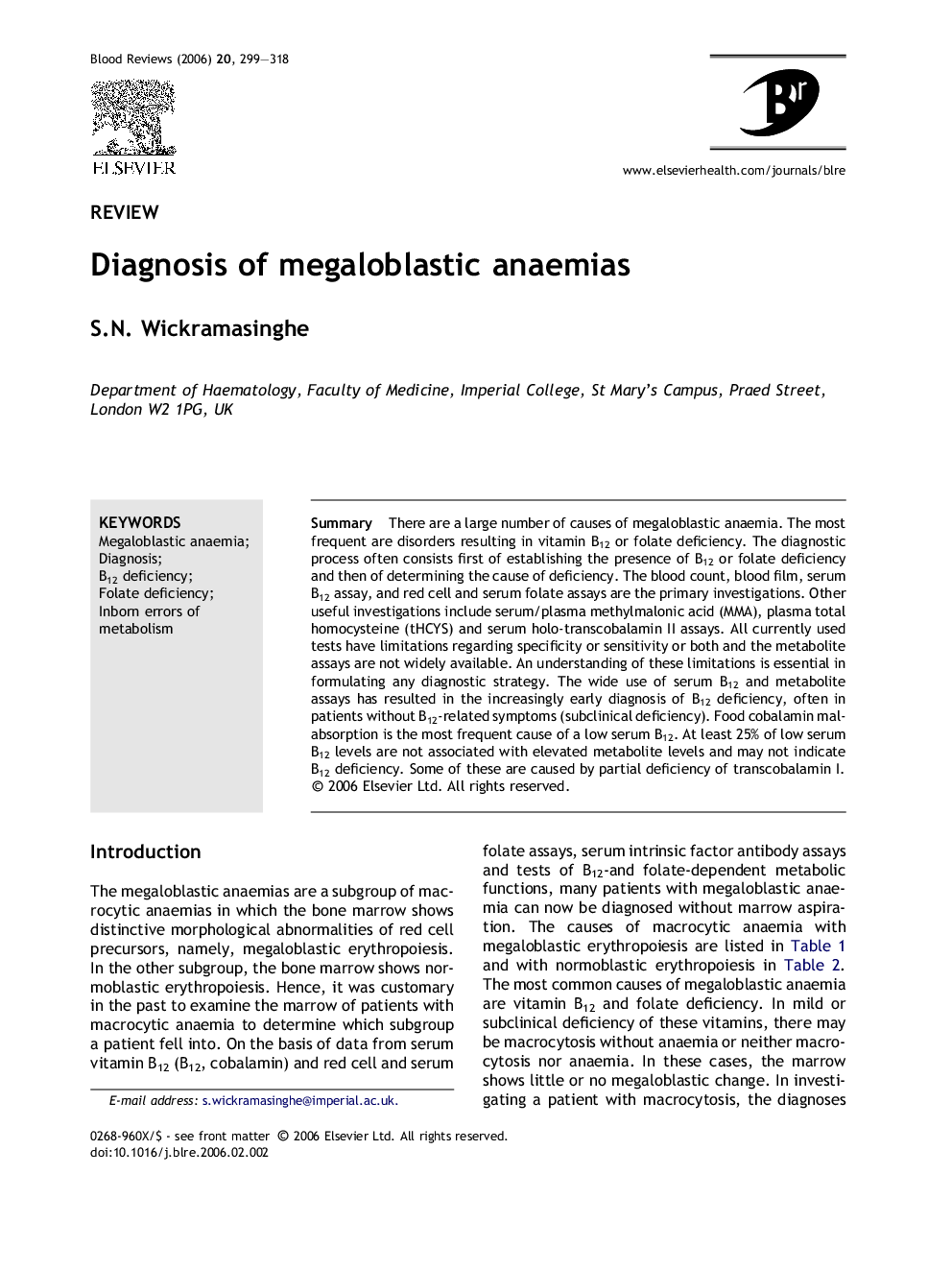| Article ID | Journal | Published Year | Pages | File Type |
|---|---|---|---|---|
| 2106528 | Blood Reviews | 2006 | 20 Pages |
SummaryThere are a large number of causes of megaloblastic anaemia. The most frequent are disorders resulting in vitamin B12 or folate deficiency. The diagnostic process often consists first of establishing the presence of B12 or folate deficiency and then of determining the cause of deficiency. The blood count, blood film, serum B12 assay, and red cell and serum folate assays are the primary investigations. Other useful investigations include serum/plasma methylmalonic acid (MMA), plasma total homocysteine (tHCYS) and serum holo-transcobalamin II assays. All currently used tests have limitations regarding specificity or sensitivity or both and the metabolite assays are not widely available. An understanding of these limitations is essential in formulating any diagnostic strategy. The wide use of serum B12 and metabolite assays has resulted in the increasingly early diagnosis of B12 deficiency, often in patients without B12-related symptoms (subclinical deficiency). Food cobalamin malabsorption is the most frequent cause of a low serum B12. At least 25% of low serum B12 levels are not associated with elevated metabolite levels and may not indicate B12 deficiency. Some of these are caused by partial deficiency of transcobalamine I.
